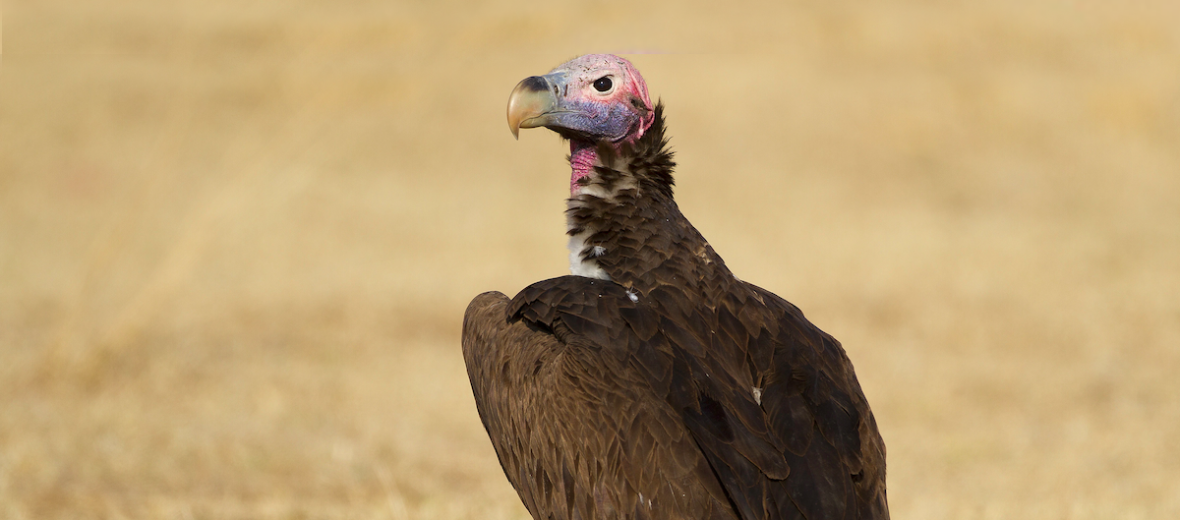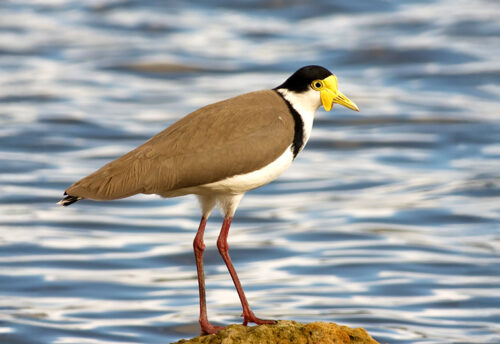
And the prize for largest vulture in Africa goes to the lappet-faced vulture, aka African eared vulture or Nubian vulture. Due to a decreasing population of an estimated 6,500 wild individuals, these birds are listed as Endangered. They face many threats, such as: habitat loss, at the hands of residential and commercial development, agriculture, roads, and ecosystem modifications; hunting; trapping; recreational activities; pollution; and accidental & intentional poisoning.
First the Stats…
Scientific name: Torgos trachelioto
Weight: Up to 15 lbs.
Length: Up to 45 inches
Wingspan: Up to 9.5 feet
Lifespan: Up to 50 years
Now on to the Facts!
1.) These birds get their name due to the folds of skin located on each side of their neck, called lappets.
2.) They are powerful and intimidating enough to scare away other avian scavengers and even jackals.
3.) The lappet-faced vulture has a strong beak that is capable of tearing tough flesh and tendons from carrion (dead animals).
4.) Lappets can be found spread throughout Africa and into the Middle East.
5.) They prefer desert habitats, dry savannahs, and semi-arid regions that contain thorn bushes, short grass, and sparse tree cover.
But wait, there’s more on the lappet-faced vulture!
6.) These vultures are among the most solitary and shy of the Old World vultures.
7.) Being aggressive and so large, they tend to rule over other scavengers at the sites of fallen animals they visit. In fact, they spend most of their time performing aggressive displays, rather than actually eating.
Did you know…?
These birds eat up to 51 ounces of food per day.
8.) Although typically silent, they can get vocal around kills; emitting growls, hisses, grunts, and yelps.
9.) A group of vultures is called a committee, kettle, or wake.
10.) They mostly consume carrion – eating the flesh and bones, but they also have been known to prey on smaller birds and will eat available garbage, near human habitations.
But wait, there’s still more on the lappet-faced vulture!
11.) Nubian vultures are monogamous (mate for life).
12.) Being solitary nesters, these birds will build nests far away from other lappets.
Did you know…?
These birds frequent water holes to wash their faces, after a meal.
13.) Nests are constructed from small twigs and dry leaves, on top of a thorny tree, for added protection.
14.) Females lay a single egg that hatches in up to 8 weeks.
15.) Chicks are independent in up to 135 days.
Now a Short Lappet-Faced Vulture Video!
Be sure to share & comment below! Also, check out the Critter Science YouTube channel. Videos added regularly!
Want to suggest a critter for me to write about? Let me know here.
Think you know a lot about critters? Try your hand at these fun, free quizzes:



